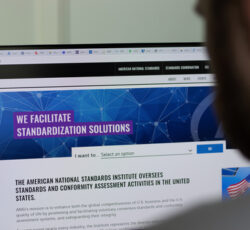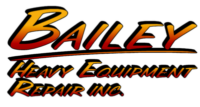ANSI Inspections
 When it comes to ensuring safety and compliance in various industries, ANSI inspections play a vital role. ANSI, which stands for the American National Standards Institute, is a well-known organization that develops and maintains safety standards for a wide range of products, systems, and services. ANSI inspections are conducted to verify that these standards are being followed, helping to ensure the safety of workers, consumers, and the general public. In this blog post, we will delve into the basics of ANSI inspections, discuss their purpose, and highlight the reasons why they are crucial in ensuring safety and compliance.
When it comes to ensuring safety and compliance in various industries, ANSI inspections play a vital role. ANSI, which stands for the American National Standards Institute, is a well-known organization that develops and maintains safety standards for a wide range of products, systems, and services. ANSI inspections are conducted to verify that these standards are being followed, helping to ensure the safety of workers, consumers, and the general public. In this blog post, we will delve into the basics of ANSI inspections, discuss their purpose, and highlight the reasons why they are crucial in ensuring safety and compliance.
What are ANSI Inspections?
ANSI inspections are comprehensive evaluations conducted on equipment, facilities, systems, and processes to determine whether they comply with established ANSI standards. These inspections are typically carried out by trained professionals who possess the necessary knowledge, expertise, and certifications to assess compliance with ANSI regulations. The focus of these inspections can vary based on the industry or specific standards that need to be met.
Purpose of ANSI Inspections
The primary purpose of ANSI inspections is to ensure that workplaces, equipment, and systems adhere to the safety standards set by ANSI. By doing so, these inspections aim to minimize the risk of accidents, injuries, and other potentially hazardous incidents. ANSI standards cover a wide range of areas, including workplace safety, electrical systems, machinery, personal protective equipment, construction, and much more. By conducting regular ANSI inspections, organizations can identify potential risks, implement necessary corrective measures, and maintain a safe working environment for their employees.
Importance of ANSI Inspections
1. Enhancing safety: ANSI inspections are a proactive approach to prevent accidents and injuries within workplaces. By enforcing adherence to ANSI standards, these inspections ensure that organizations have assessed and mitigated potential risks, implemented appropriate safety protocols, and provided necessary equipment and training to employees. This focus on safety helps to create a secure working environment for everyone involved.
2. Compliance with legal obligations: In many industries, complying with ANSI standards is a legal requirement. The authorities and regulatory bodies responsible for ensuring workplace safety often incorporate these standards into their regulations. Conducting ANSI inspections helps organizations demonstrate their commitment to meeting these legal obligations and avoiding potential penalties or litigation.
3. Boosting consumer confidence: ANSI inspections are not limited to workplaces; they also extend to various products and services in the market. By adhering to ANSI standards and undergoing regular inspections, manufacturers and service providers can instill confidence in consumers regarding the safety, reliability, and quality of their offerings. This trust ultimately enhances their reputation and allows them to remain competitive in the marketplace.
4. Improvement and innovation: ANSI inspections can act as catalysts for continuous improvement and innovation. By identifying areas of non-compliance or potential risks, organizations can implement corrective measures, upgrade systems, and adopt new practices to enhance safety and efficiency. This proactive approach promotes innovation within industries, leading to the development of new technologies, methods, and products that meet or exceed ANSI standards.
Conclusion
ANSI inspections are essential for upholding safety standards, ensuring compliance, and promoting a secure working environment. By adhering to ANSI regulations, organizations can protect their employees, consumers, and the general public from potential hazards, legal issues, and reputation damage. These inspections serve as a proactive measure to identify and rectify any non-compliance issues, leading to continuous improvement and innovation within industries. Embracing ANSI inspections not only offers peace of mind but also contributes to the overall well-being and success of businesses in an increasingly safety-conscious world.
